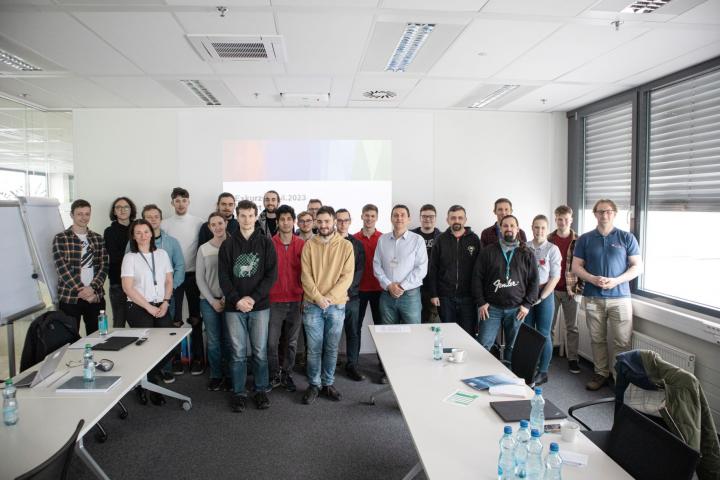
The students were not only given a classical tour of the production and development sites, but could also try out selected model cases that are commonly solved by developers across all electrical engineering disciplines in the automotive industry. This was particularly the case in the areas of electric vehicle brakes, vehicle electrification and new technology and product development. Both electrical engineering students and future software specialists or artificial intelligence experts find employment at the research centre of one of the biggest players in the automotive industry.
Students were presented with five "challenges" in which they tried to grasp and detect possible faults or model diagnostic or testing processes. Whether it was diagnosing leaks in the fuel system using software tools or getting the pump module test set-up of the exhaust gas nitrogen oxide removal system up and running and ensuring it cycles correctly.
In other projects, students and experts participated in the design and optimization of electrical filters according to the applicable standard, searching for faults and causes of relay failure on the connector of the charging cable or basic programming processes in the PLC language. "The students participated in a practical project in which they programmed a PLC (programmable logic controller) to test the functionality of a semaphore circuit board. This program was designed to check the functionality of all the LEDs in the traffic light through several test cycles and a camera system. The task also included connecting the PCB to the I/O modules of the control system and bringing the circuit to life," explained Jiří Masopust, Technical Specialist at Bosch.
The teams had the opportunity to try out all the situations in both digital and mechanical form and verify the correctness of the whole process. "I tried crimping for the first time, which was great. It involves connecting connectors to a cable. It was great to practically try out all the things I knew so far only from the theory in my studies," says Jakub Strnad, a student of the Electronics and Communication programme at FEL CTU.
Before presenting the challenges to each other, all participants had the opportunity to visit other laboratories involved in the development of sensors and measurement of noise and vibration in vehicle interiors. "I really appreciated the interest of students in all the workplaces, the operation of the plant, possible job opportunities and, for example, their questions about the process of digitizing and storing the data we collect during testing. In addition, we also had time for an informal discussion during the coffee break," summarized Jiří Maršík, responsible for the test and measurement group.